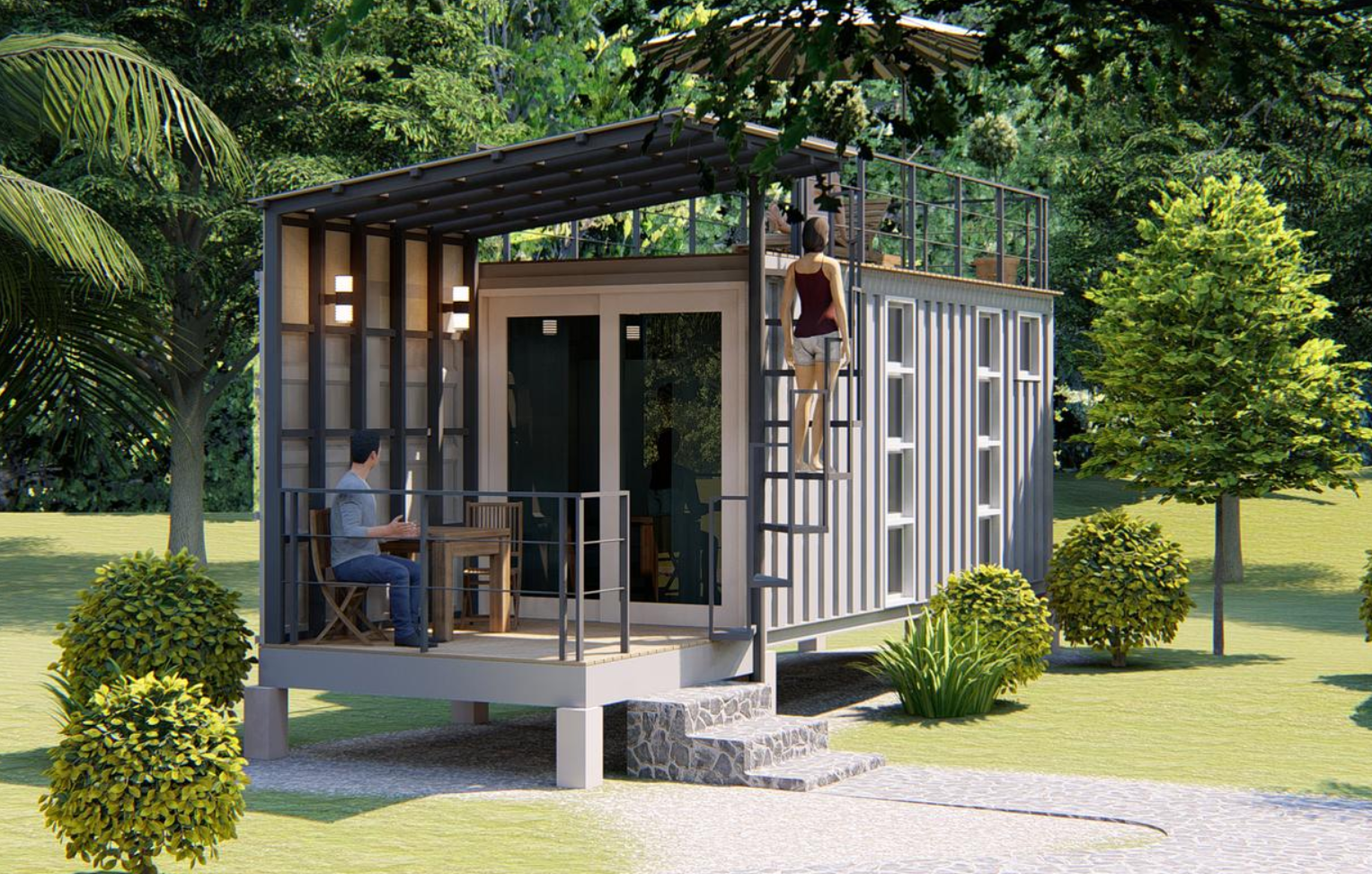
This is the fourth in a series of articles which examines the growth and success of the Outdoor Accommodations segment of the global holiday accommodations market. This article has a particular focus on Glamping. It explains the “Glamping” concept and identifies the primary accommodation types found within the Glamping environment. A subsequent article looks at Glamping’s competitors, its product structures, its competitive differentiators, its appeal to affluent leisure travelers, the specific commercial benefits for Developers who choose to create high quality Glamping accommodations and examined the way in which the concept has been embraced by luxury global hospitality brands.
What is “Glamping”?
“Glamping” first entered the English lexicon in or about 2005 although according to Wikipedia, the word “glamping” was only added to the Oxford English Dictionary in 2016 and, as noted above, is a form of camping involving accommodation, facilities and services that are more luxurious than those associated with traditional camping. Whilst the word may be comparatively new, the concept which “glamping” connotes, namely luxurious outdoor living, is not. Many examples can be traced back to past centuries, in different parts of Europe and elsewhere. Epic movies have often featured opulent tented structures when covering particularly grand periods of history such as the rise of the Roman and the Ottoman Empires.
“Glamping” is the term used to describe “posh” or “glamorous camping”, defining a style of camping with amenities and, in some cases, resort-style services, not usually associated with more “traditional” camping. Glamping has become particularly popular with 21st-century tourists seeking the comforts of traditional resort accommodations linked to the escapism and adventure recreation activities generally associated with camping. The concept has grown internationally in response to various factors including the need for escapism, consumer desire for new experiences, rest, relaxation, personal wellness, and heightened awareness for more eco-friendly forms of resort accommodations.
Glamping began as an offshoot of the luxurious African Safaris which were popular in the last century and has continued to the present day as a growing segment of the resort industry. All aspects of glamping are designed to improve on the experience of regular tent camping whilst reducing or eliminating virtually all the discomforts. At the lower end of the glamping spectrum are spacious canvas bell tents with proper beds and comfortable interiors, whilst at the top end of the scale, the tented accommodations can include ultra-luxurious full-service lodgings complete with all the comforts of home and some of which are operated by several the world’s most famous luxury hospitality brands.
Glamping typically combines outdoor excursions with the amenities of a luxury resort. It differs from traditional camping because the accommodations are, as a rule, owned by the Site Developer and not by the campers. The global glamping market size was valued at USD 2.1 billion in 2018 and was projected to expand at a CAGR of 12.5% from 2019 to 2025 before the Pandemic disrupted the global travel and tourism industry.
Glamping continues to gain traction, especially in regions where climate and pristine natural environments support outdoor activities for large parts of the year, primarily in response to new consumer preferences and demands and in particular:
- The significant global growth of experiential and nature-based travel and especially the desire amongst affluent travellers for adventure travel, as well as more authentic vacation experiences.
- The rising popularity of wellness tourism, with increasing numbers of travellers in search of escapism, rest, and relaxation through connecting to nature and personal wellness, while still seeking adventure and social interaction and simultaneously enjoying luxury amenities.
- Greater awareness of the need for preservation and protection of the environment, where glamping projects are more environmentally sensitive than traditional bricks and mortar developments.
- Advances in the development of synthetic materials, technology and construction and assembly methods within the tented accommodations environment.
- Wider international acceptance of the appeal and attractiveness of tented accommodations, demonstrated by brand endorsement by some of the world’s top luxury hotel brands.
Glamping has been put under a more intense spotlight by Developers since the onset of the Covid-19 pandemic. Well-designed resorts which utilise tented accommodations can offer greater privacy for guests by virtue of the separation of the individual self-contained, free-standing accommodation units. Secondly, with the popularity of “staycations” and drive-to destinations, glamping developments have an incredibly strong point of competitive differentiation which enhances their appeal to domestic travellers, especially given the time it will likely take time for air travel to recover from the pandemic and re-open popular international destinations.
Acceleration in the development of glamping was evident across Europe, especially in France, the UK, many of the Mediterranean countries plus Germany and Slovenia. The Global Financial Crisis was a factor in popularising what became known as the “Staycation”, driven by consumer desire for value-for-money holidays. A Report published by Barclays Bank in 2019 entitled “The Great British Staycation” provided clear evidence of the growth in domestic holiday taking within the UK. According to the most recent Norther American Camping Report, an independent study supported by Kampgrounds of America, some 31% of camping trips undertaken in North America are to locations within 50 miles of the travellers’ homes.
If both climate and natural environment lend themselves to the development of glamping projects, then what types of accommodations are generally available? The most popular include:
1. Shepherd’s Huts
These have been popular in northern England and Scotland and typically sleep two persons only. They are found within existing farm-style camp sites and may be one of the specific accommodation types alongside more traditional tents. They are a low-maintenance type of unit and will typically provide a sleeping area, a small kitchen area, a bathroom and compost toilet facilities plus outside deck area.

2. Yurts

A yurt is a portable, circular dwelling made of a lattice of flexible poles and covered in felt or other fabric. They are a sturdy, reliable type of tent and have existed for thousands of years in Central Asia, especially Mongolia, in virtually the same form as they exist today. They have always been ideal dwellings for the nomadic cultures of the Central Asian steppe.
Traditional yurts take 3 hours or more to set up or take down, and usually house between five and 15 people. They are usually a little over 2 meters (6 feet) high, with a slightly domed top rising another meter. A wood-burning iron stove sits in the middle of a traditional yurt, with a long chimney reaching up past the roof.
The roof of a yurt is the most complex part of the structure. The central part of the roof is called the crown, which is partially open, allowing air to circulate and a chimney to penetrate the structure. The felt which covers the yurt is usually made of wool collected from domesticated sheep, goats, or yaks. Most traditional yurts have three to five layers of felt, and often, an outer layer of waterproof fabric such as canvas.
Modern yurts have grown in popularity in North America and Europe, especially in glamping settings. Some Developers choose to use native hardwoods, such as ash or chestnut, for their yurts, as well as high-tech material, such as aircraft cables, for a more secure construction. Unlike traditional yurts, these modern yurts are usually meant to be relatively permanent.
3. Pods

A holiday in a glamping pod is a cheaper accommodation option which can still provide a glamping experience but without the luxury price. Glamping pods, such as the examples shown above, offer cosy shelter for year-round camping and all-weather protection, hence their popularity in more exposed northern climes. The pods vary in terms of facilities; some have beds, electricity, a compact kitchen area and even a hot tub and deck area. They can sleep 2 to 4 people but whilst they are relatively simple to set up and maintain, they tend to have a generic look and feel which can depress the rates which they can generate.
4. Tree Houses
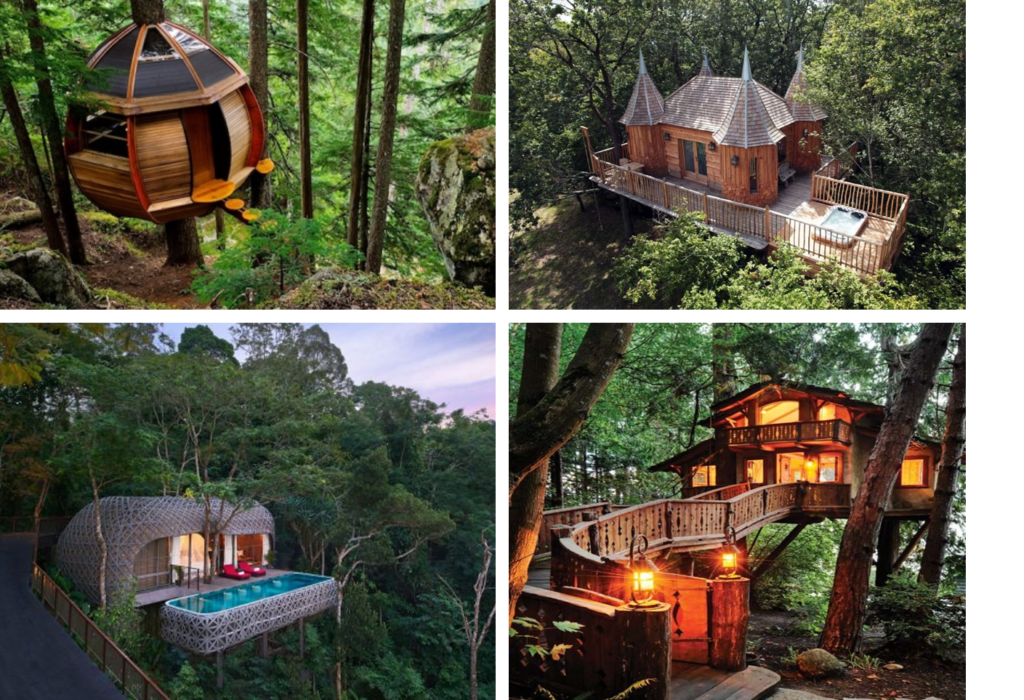
Tree houses utilize infinite shapes and sizes and afford architects and designers scope to display their creative talents. Various types of treehouses are shown above. They have featured as an accommodation option at many luxury resorts for decades. By way of example, the world-famous Post Ranch Inn at Ventana on Big Sur in California has offered tree houses in addition to their spacious individual lodges and an example is shown in the photograph below. Depending on time of year, these tree houses can rent for over $1,800 per night.
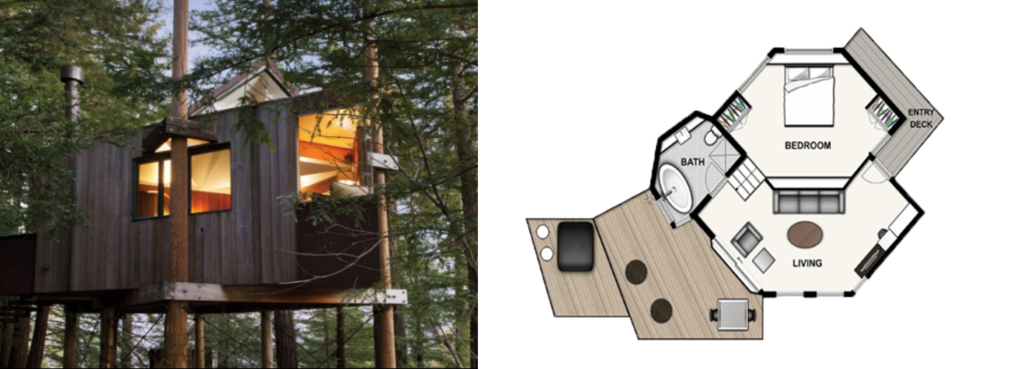
Some examples of floor plans for tree houses are also included for reference, to illustrate how flexible, as well as how large, they can be.
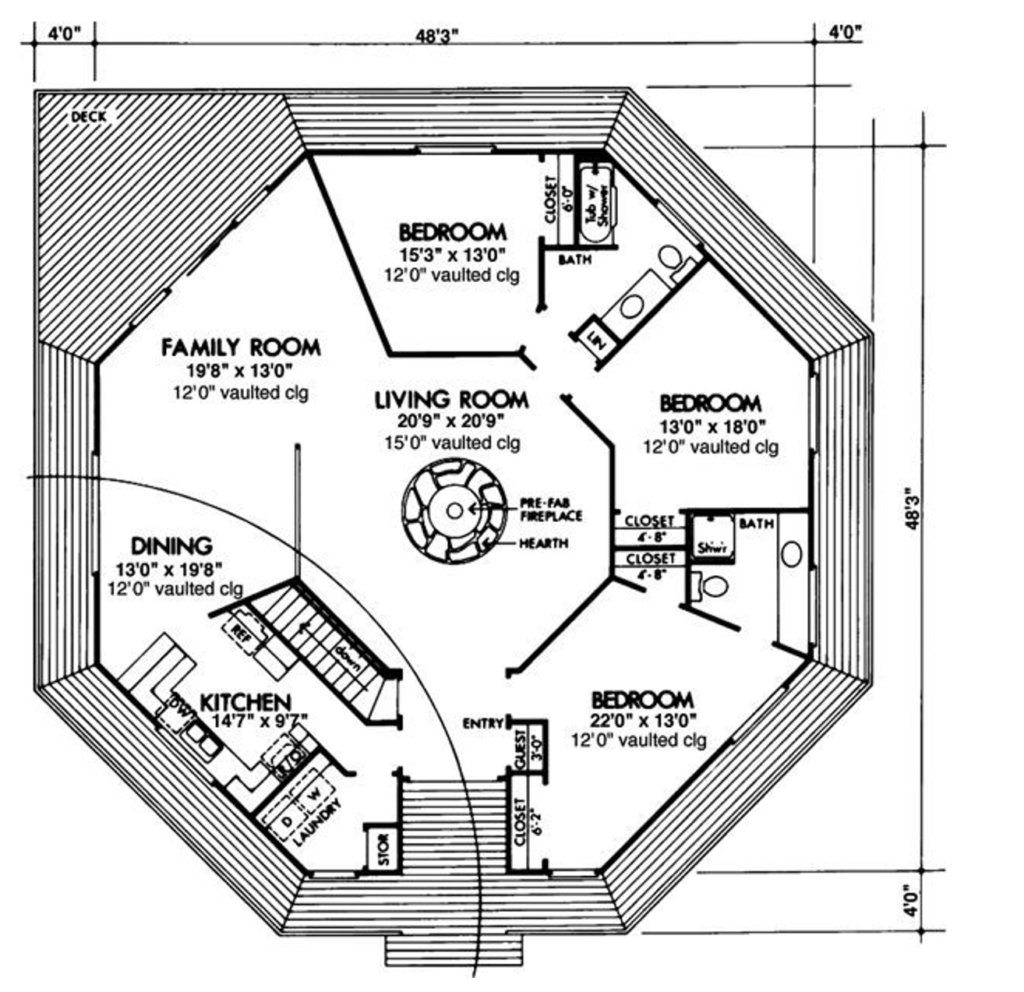
5. Bell Tents
These have been a popular choice in some jurisdictions where the climate is suited to providing usage for at least 8 or 9 months of the year. They have a low environmental impact and are not expensive to purchase and set up, but the canvas may need frequent replacement, especially where the climate is challenging. In temperate locations, they are usually dismantled so as not to be exposed to adverse weather conditions during winter months. Generally, they can provide an enjoyable experience, but they do not compare to the high spec safari-style tents which are found within luxury branded resorts.
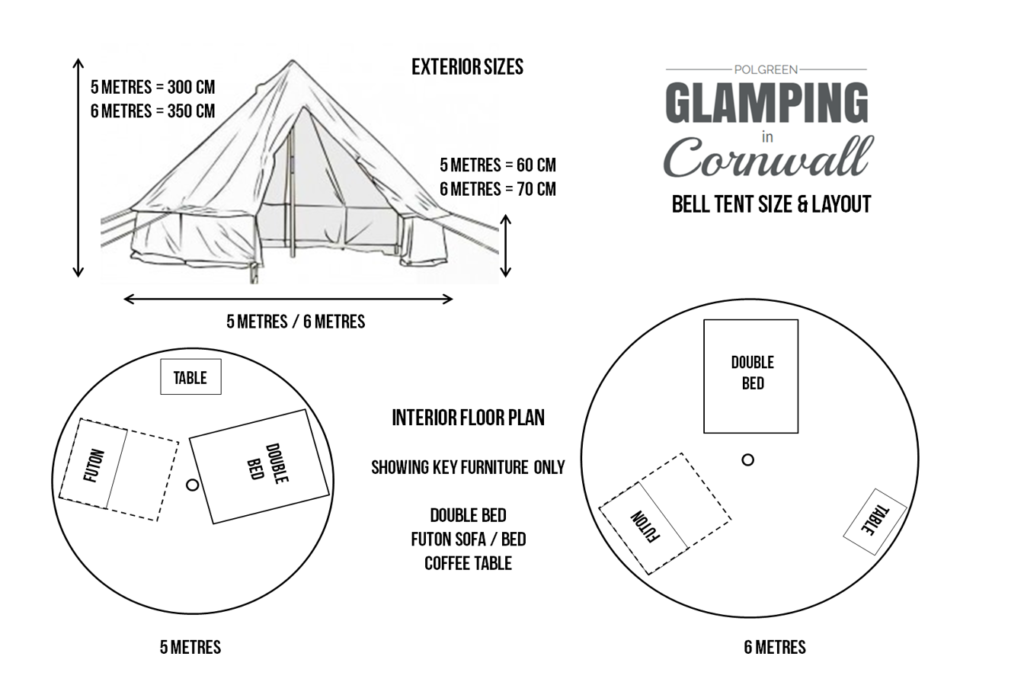
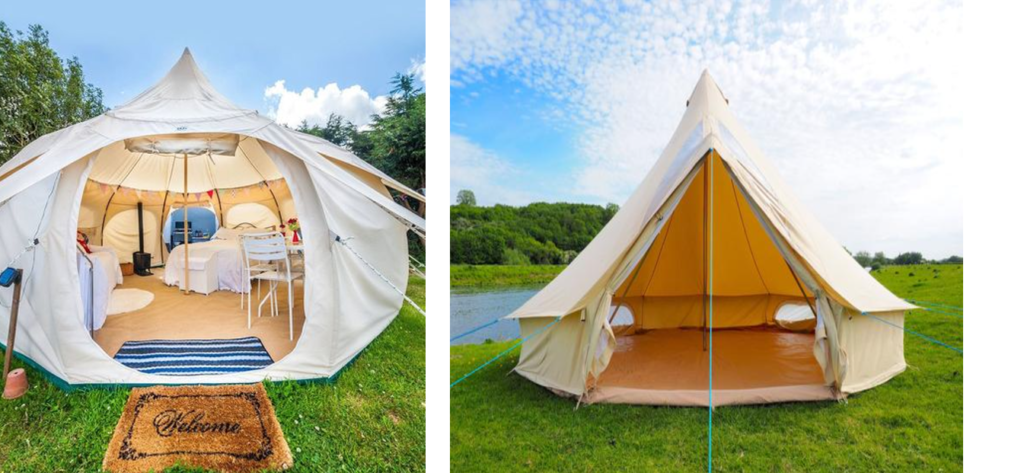
6. Tepees
Tepee’s [also spelled “Tipis”] were originally the homes of the nomadic tribes of the Great Plains in North America. A tepee was built using long poles as the frame. The poles were tied together at the top and spread out at the bottom to make an upside-down cone shape. Then the outside was wrapped with a large covering traditionally made of buffalo hide. Tepees utilise an ingeniously simple construction method based upon just a few raw materials. Nowadays a durable fabric, typically a weather-resistant canvas or heavy cotton – is wrapped snugly around the poles, leaving only a hole at the top to release smoke, a small door and sometimes a window or two. A central fire would heat the structure in winters.
Today, these modern conical tepees are constructions that are warm, spacious, and a historical alternative to a modern tent. They can be found at Glamping sites in Canada and the USA as well as in Australia.
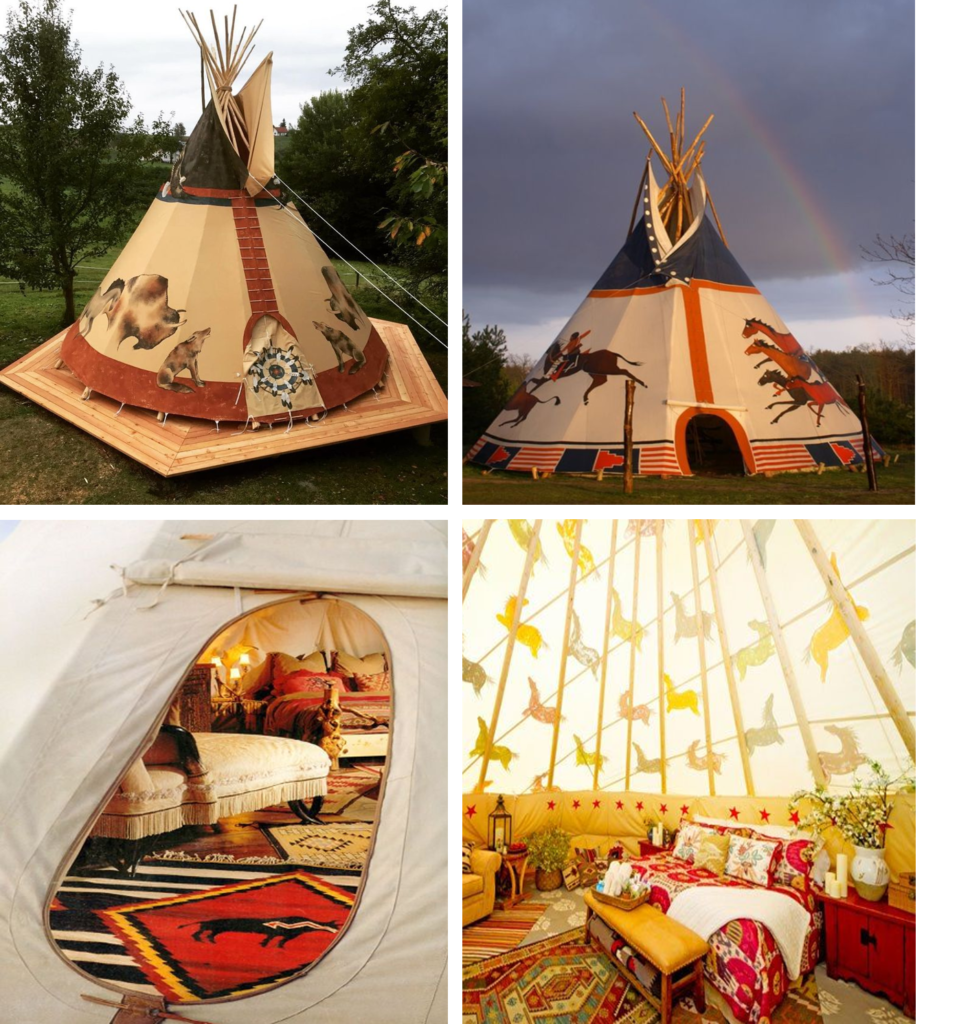
7. Wagons
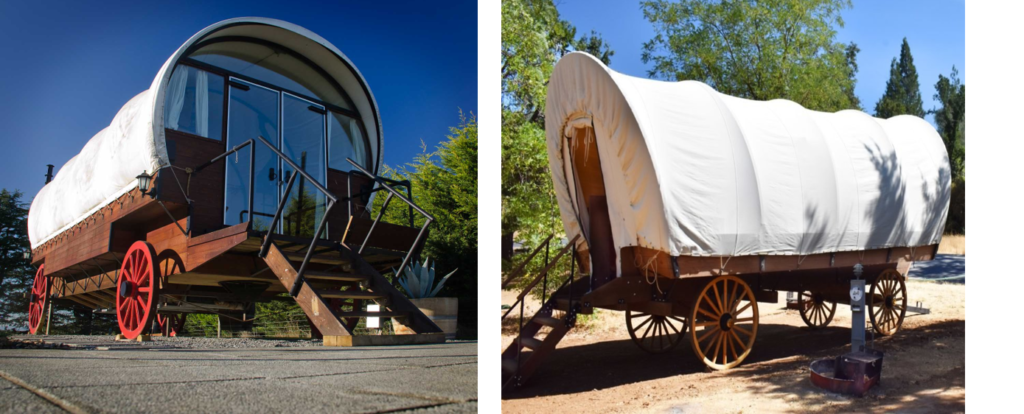
Gypsy-style wagons have garnered a share of the market within glamping sites in various parts of Europe whilst the traditional Settlers’ wagons, so often featured in movies covering the pioneering exploration and settlement of America’s Wild West, have proved popular for families in many states in the USA such as Idaho, Utah, and Montana, for families seeking a holiday experience with a link to history.
8. Cabins
According to the Oxford English Dictionary, “cabin” means a small wooden shelter or house in a wild or remote area. Other definitions refer to ship’s cabins and aircraft cabins but within the context of this article, the Oxford Dictionary definition is accurate. Cabins tend to come in all sorts of shapes and sizes, as shown in the photographs below. They often rely on traditional timber designs, but innovative Architects have expanded the boundaries of what might be regarded as a traditional cabin.

One particular example of this innovative approach is that taken by a Los Angeles-based firm called M-Rad which has created a compact, movable cabin with design elements to accommodate people with disabilities, including a shower with a seat and doorways which are wide enough for a wheelchair to pass through.
The “X-Suite” dwelling, as the unit is known, is featured at Autocamp Yosemite, a glamping site in northern California that offers a range of accommodations, from tents and trailers to cosy cabins. The site is located near Yosemite National Park, one of the most visited parks in the US. For the 35-acre (14-hectare) campground, M-Rad created five identical tiny cabins that comply with the American with Disabilities Act (ADA). The civil rights law, enacted in 1990, requires public spaces to be accessible to people with mobility limitations and other disabilities.
The X-Suite cabin totals 270 square feet (25 square metres). In addition to accommodating guests with disabilities, the dwelling features prefabricated construction and well-appointed interiors. Rectangular in plan, the cabin contains a bedroom with a queen bed, a full bathroom, and an open-plan living area and kitchen.
The small building has a wooden frame, exterior walls wrapped in a metal rainscreen, and a standing-seam metal roof. Designed to be movable, the cabin sits atop a steel chassis with wheels. Inside, the team incorporated painted drywall, white Corian countertops and Porcelenosa tiles. Walnut was used for flooring and casework. Please refer to the 4 photographs below.
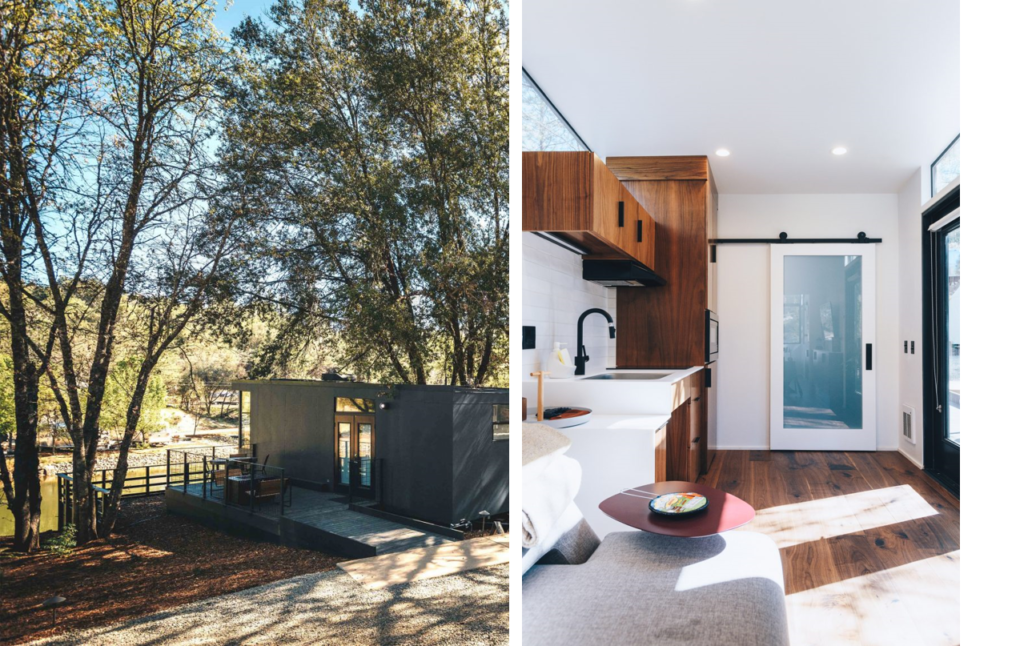

Rooms are furnished with simple decor in neutral tones, including a pale-grey futon accented with tan pillows. Contemporary artwork adds pops of colour. Luxury amenities include an Apple TV and air conditioning. Ample glazing enables guests to feel connected to the surrounding woods.
This is an excellent example of how innovative design and engineering can be applied to create exciting new outdoor accommodations, using first-class, durable materials and which have the added advantage of portability.
9. Safari Tents
Safari tents offer the widest scope for bespoke design and innovation in the creation of unique tented accommodations. Considerable ingenuity as well as technical advances in construction and materials has been applied to the manufacture of spectacular free-standing tented structures based around the safari tent. It is this specific segment of the glamping industry that will be the primary focus of this analysis going forward, given that this is the type of tented accommodation that readily lends itself to adoption by luxury global hospitality brands.
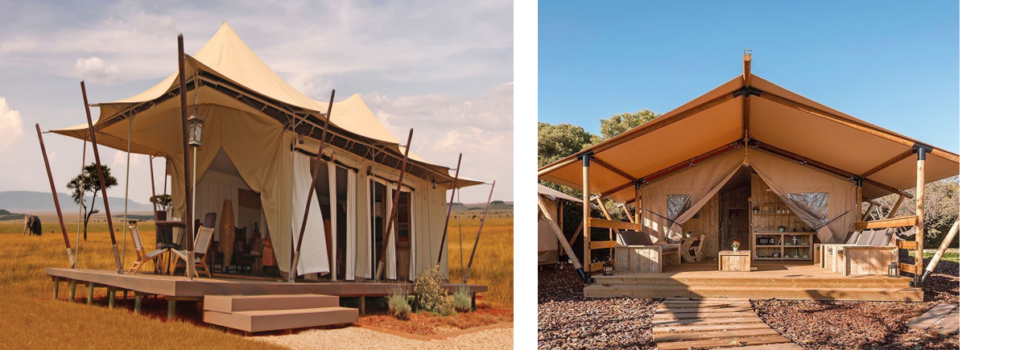
10. “A” Frames
In his definitive 2004 book on the A-frame, architectural historian Chad Randl wrote that the popularity of these houses coincided with the era of “second everything.” Second TVs, second bathrooms, second cars, and, eventually, second homes. Between 1955 and 1965 within the USA, the wage for the average worker rose 50 percent. Construction of new highways, as well as the creation of new dams, lakes, and reservoirs across the country, opened the wilderness as a weekend destination.
The “A”-frame, in its purest sense, is a house shaped like an equilateral triangle. Its distinctive peak is formed by rafters or trusses that are joined at the top and bolted to plates or floor joists down below. The roof covers the rafters and goes all the way to the ground. The cross-piece of the A is created by horizontal collar beams, intended to stabilize the structure, which typically support a sleeping loft.
“A”-frames meet the earth on rubble or cinderblock walls, concrete, or wood columns, but their essential nature is to float slightly above their environment, rather like a viewing platform for an expanse of nature. “A” frames did exist in the USA before the 1950’s. Randl found evidence for pitch-roofed structures in China, where they covered pit dwellings, and in traditional farmhouses on Shirakawa, Japan to Polynesia, where the roofs of such “great houses” were said to resemble the sails of boats.
The design and layout which makes the most of the open space created by the overarching rafters, and stuffs the kitchen, bedrooms, and bathrooms into the dark end of the A, has proven to be surprisingly durable. Staying low, and furnishing minimally, was the best way to take advantage of an abundance of floor and a pittance of wall. Another factor contributing to the rise of the “A” frame included the adaptability of the structure itself, which enabled architects to experiment with more modern designs. “A” frames were a useful medium in which architects could explore their creative side since they were also relatively cheap to build.

The “A” frame was the right shape at the right time. The mid-20th century was the era of the second everything, when post-war prosperity made second televisions, second bathrooms, and second cars the just desserts of American middle-class life. “A” frames were in harmony with nature, blurred the distinction between interior and exterior, could be built by those who wanted to do it themselves, and were easily packaged into affordable kits.


“A” frames brought the dream of a second home within reach of an ever-larger number of Americans. Their popularity spread overseas to the point where they became almost ubiquitous within the outdoor accommodation sectors, especially in Canada, Scandinavia, the Baltic States, Scotland, Japan as well as in China, the South Pacific Islands and elsewhere.
It should also be noted that the basic “A” frame design has had commercial applications, such as churches, restaurants [e.g., Whataburger stores plus the IHop chain in the USA] Florida’s Disney Contemporary Resort’s main building, and many more resorts].
11. Other novel forms of outdoor accommodation
As Developers seek to create their competitive differentiation by means of unusual outdoor accommodations linked to unique and immersive experiences, their Architects and Designers frequently deliver unique designs which harmonize with their environment.
A. Floating Houses
After years of research a Company called EcoFloLife has developed the WaterNest eco-friendly floating house, exclusively designed by the renowned Italian architect Giancarlo Zema. It is a 100 sqm residential unit, 12 m in diameter and 4 m high, made entirely of recycled laminated timber and a recycled aluminium hull. Balconies are conveniently located on the sides and thanks to the large windows, permit enjoyment of fascinating views over the water. Bathroom and kitchen skylights are located on the wooden roof, as well as 60 sqm of amorphous photovoltaic panels capable of generating 4 kWp which are used for the internal needs of the floating house.
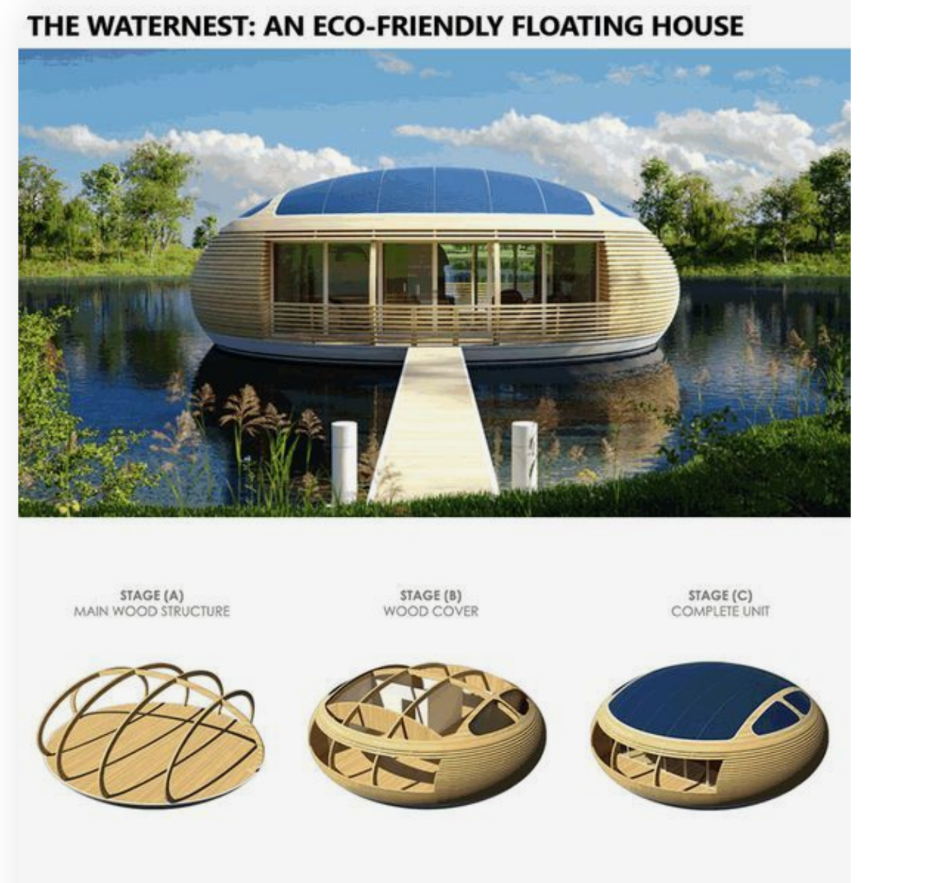
The interior of the WaterNest floating house can include a living room, dining area, bedroom, kitchen, and bathroom or have other configurations according to the different housing or working needs – ideal for those wishing to live independently, exclusively and in complete harmony with nature.
The WaterNest, floating house can be positioned along river courses, lakes, bays, atolls, and sea areas with calm waters. The use of materials and sustainable production systems make this unit recyclable up to as much as 98%. In addition, thanks to a sophisticated system of internal natural micro-ventilation and air conditioning, it is classified as a low-consumption residential habitat.
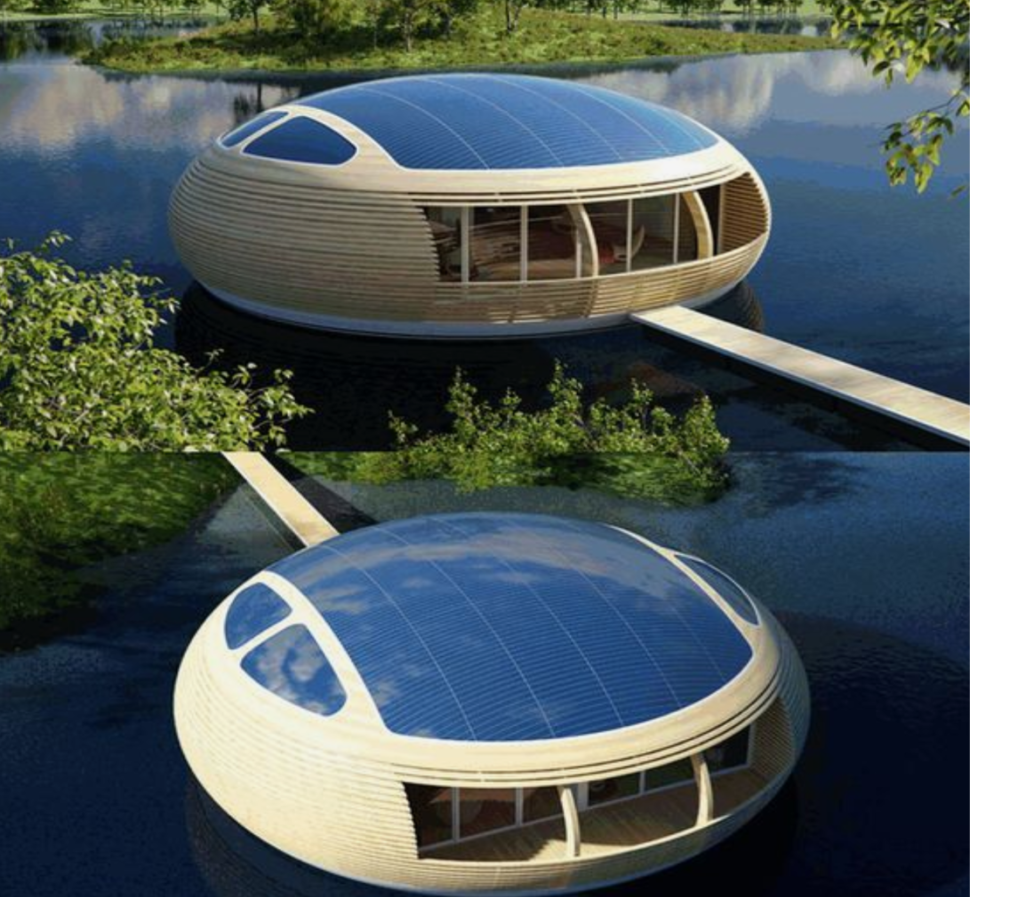
Source: http://www.ecoflolife.com/habitat/
B. Shipping Containers
Since the 1990’s, converted shipping containers have been touted as cost-effective accommodation for students as well as a solution to housing shortages especially in impoverished areas of the world. It is no surprise therefore, that containers have also been adapted to provide attractive outdoor accommodations, as the photos below demonstrate.

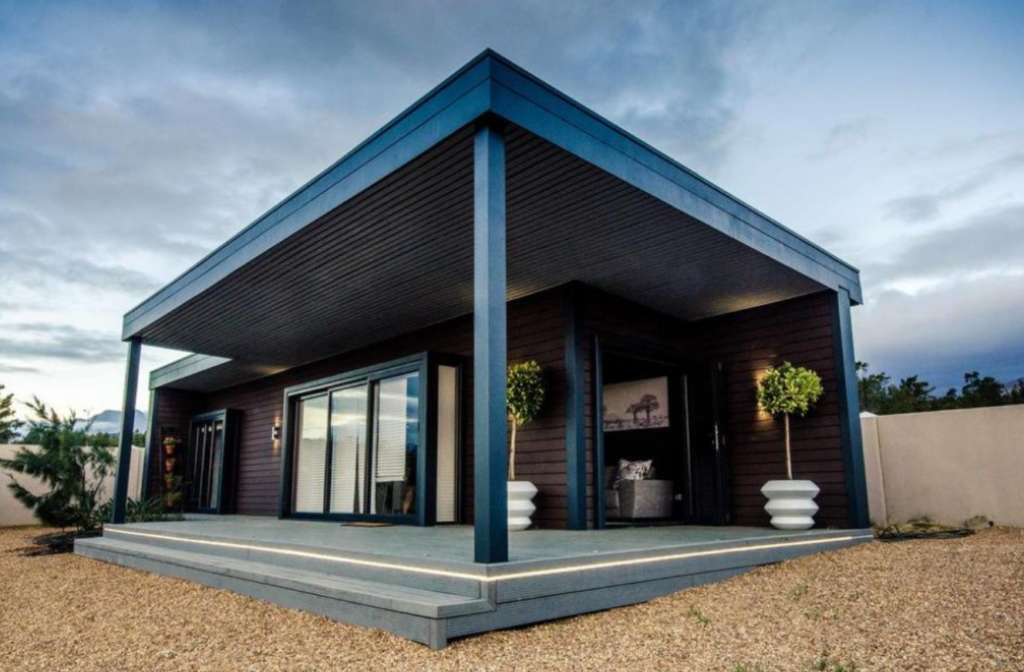
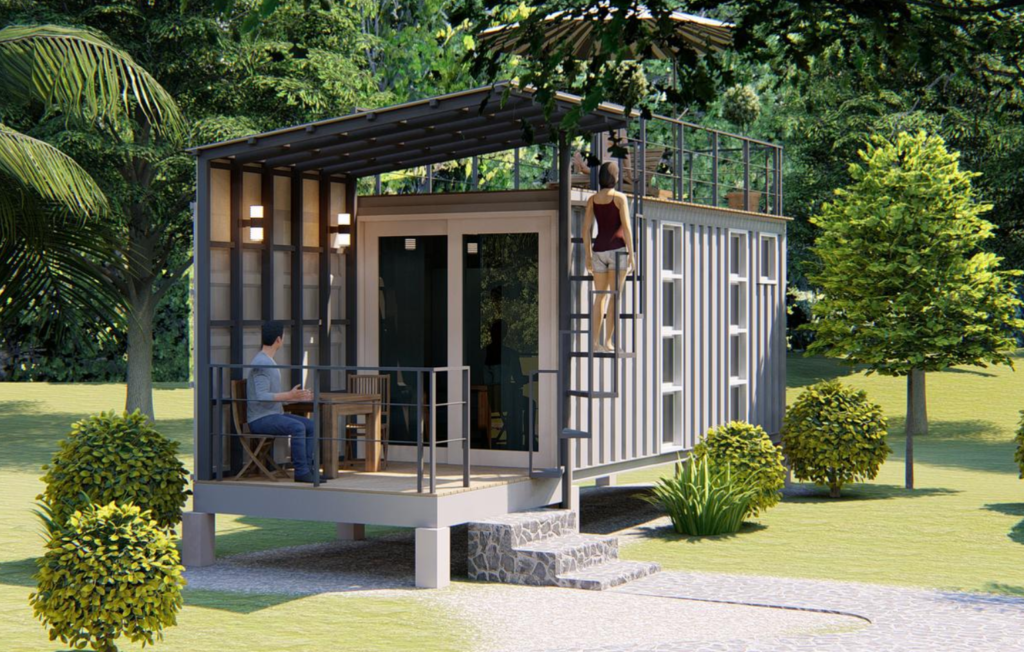
Many other outdoor accommodation concepts have been developed in various parts of the world, using a wide range of construction materials, with some focused on using recycled materials throughout the entire design and fit-out. Oten, there is a strong focus within the design on sustainability and eco-friendliness. The mix will continue to grow in response to consumer demand.The Glamping concept, beyond the accommodation types, is considered in more detail within the next article which will identify the consumer segments to which glamping appeals, including consumer motivations and explain why the concept has found favor with Developers and Operators and not just with discerning travelers. Legal aspects of glamping development will also be considered. We will also look at some examples of luxury tented accommodations which are currently being operated by some of the world’s most respected luxury hotel brands.
